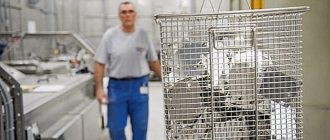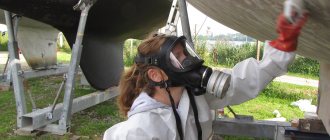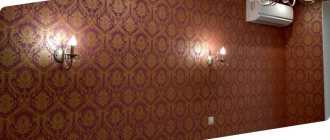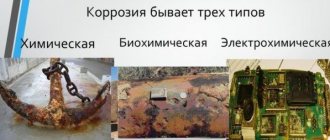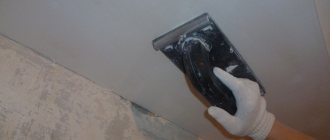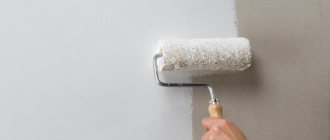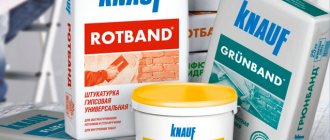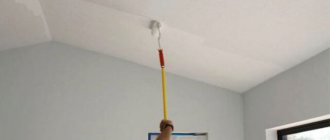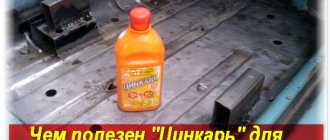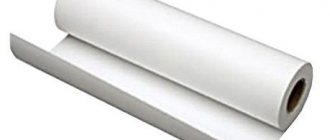The need to prepare metal products for painting is due to an increase in the adhesion characteristics of the substrate to the paint and varnish material and the resistance of the metal to corrosion processes. All this will have a positive effect on the service life of the painted products. However, most owners are much more concerned about the presence of rust, which must be removed during the metal preparation process, than about degreasing, which is why painting work is carried out without this important and mandatory operation.
What is defatting?
Degreasing is a special procedure that is performed to remove fatty substances from the surface. Many paint and varnish compositions react negatively to fat particles that remain after touching, etching, and washing. This causes the dried paint to crack.
Fatty contaminants are divided into three groups depending on the degree of accumulation. They can be weak, medium, or increased.
Glass degreasers
Compared to plastics, glass practically does not react to any solvents except the strongest acids. Therefore, you can use any available composition for it. It is important to remember that the properties of glass do not apply to rubber seals - rubber or plastic frames. They will have to be dismantled or protected from the effects of the solvent composition.
Degreasing glass
To degrease the glass surface, use alcohol, acetone, license solvents, alkaline solutions, white spirit - whatever is at hand.
Purpose
Degreasing metal before painting is the most important procedure that is mandatory before applying acrylic, powder, or alkyd paint. The fat film slows down the adhesion of paint compositions to the surface on which they are applied.
Body treatment before painting
Why do you need to degrease?
What is defatting? Dirt and dust on the surface significantly reduces the adhesion of the surface to the finishing material. The durability of the applied coating or the quality of adhesion will be poor. The glue or paint materials will bond not to the surface, but to the mud layer. They degrease metals, plastic, glass, wood and other materials for the reason that oil or fatty areas that are always present on the substrates also prevent the adhesion of paints or adhesives. Let's see what you can use to degrease surfaces before painting.
On video: why degrease the part before painting.
Cleaning methods
All methods for cleaning metal from fatty deposits can be divided into several broad groups:
- Chemical methods. The most effective, popular. Organic solvents are used for cleaning. In production, ready-made solvents are rarely used due to the risk of explosion.
- Cleaning with water. Any housewife knows that ordinary water is not suitable for removing grease particles from metal surfaces. For the aqueous solution to be effective, it must be heated to 65°C. You need to add surfactants to it.
- Alkaline degreasers for metal. Special compounds. Alkaline degreasers have one disadvantage - after cleaning the surface from grease, additional treatment must be carried out to prevent the possible formation of rust.
- Emulsion compositions. Such degreasers are used to remove coarse contaminants. They have a lot of strengths.
A separate group includes electrochemical and ultrasonic methods for cleaning metal surfaces. The workpieces are placed in special baths through which directed ultrasound is applied. Only suitable for processing small parts.
Work order
Processing should be carried out in the following order:
- Cleaning the surface before painting mechanically. To do this, use sandpaper or a grinder. At this stage, you need to eliminate rust and other defects.
- Elements that cannot be processed are covered with stencils or adhesive tape.
- Degrease the surface with special means to remove dirt. The work is carried out using a piece of fabric.
- After the metal has dried, its surface is primed and painted.
If dirt cannot be removed with a rag, then a small product is placed in a container with solvent. For voluminous metal structures, a paste-like composition is used, which is covered with film for several hours.
For work, choose a room that is well ventilated. It is not allowed to carry out processing near an open flame source. You first need to estimate the solvent consumption that will be required to completely cover the surface before painting.
Before painting the car, prepare the room in a dry and warm place. Additionally, you will need a sanding machine and an air gun for applying putty and primer. Parts to be painted are dismantled.
How to degrease a metal surface is chosen from a wide range of substances. The final decision depends on the type of contaminant that needs to be removed, as well as the safety and consumption of the solvent. This treatment allows you to obtain a high-quality paint coating. Degreasing is carried out in various areas where metal products are used. This includes car repair, manufacturing, etc.
How to degrease metal with your own hands (2 videos)
Degreasing metal at home (25 photos)
Popular means
Before you begin the metal degreasing procedure, you need to consider the most popular options for grease removal products.
White Spirit
The most popular degreaser. It can be bought at any construction market, in stores with auto parts, and household chemicals. The principle of cleaning the surface from grease:
- Wear gloves, a respirator, and safety glasses.
- Apply white spirit to a dry cloth.
- Wipe the dirty area with force.
Gasoline, acetone and analogues
Effective degreasers for cleaning metal surfaces. Peculiarities:
- If kerosene is used, you need to use clean liquid. Kerosene cannot be used to clean large parts of the body.
- To clean large parts, it is recommended to use high octane gasoline.
- Acetone. The product enters into chemical reactions with different types of metals. This may ruin the appearance of the workpiece.
- Trichlorethylene. Liquid for degreasing ferrous metals. Before application, you need to wipe the part with a dry cloth to remove any remaining water.
A separate group of products includes soap solutions. They can be prepared using any soap or detergent.
Antisilicone
A cleaning product that resembles a windshield liquid that creates an anti-rain effect. Antisilicone is suitable for degreasing metal, rubber, and plastic. Does not destroy the old paint layer.
Antistatic
Used for degreasing metal surfaces in places where metal comes into contact with plastic elements. Antistatic agents dielectricize the surfaces on which they are applied. Therefore, before painting, there is no grease or settled dust left on them.
Alkalis
Alkalies are contained in various cleaning compositions for cars, plumbing, and household appliances. With their help, you can clean plastic and metal from dirt, and degrease various materials. When working with alkaline compounds, it is necessary to take into account a number of features:
- When degreasing a car before painting after applying alkalis, you need to put it in a dry garage to dry.
- If the package says that the solution is effective only after heating to 60°C, you can apply it to the metal and heat it with a hairdryer. When grease comes to the surface, it should be wiped off with a dry cloth.
When purchasing an alkaline product, you need to study its composition. Some components can damage the decorative coating and ruin the appearance of the metal.
Body degreasing
Ultrasound and other processing methods
Degreasing methods:
- Use of ultrasonic baths.
- Electrochemical method. To clean metal you need to use industrial equipment. Therefore, electrochemistry is not suitable for domestic use.
Since the degreasing process involves not only removing the fat film, but also cleaning the surfaces from contamination, it is permissible to use a mechanical processing method. To do this, you can use various power tools - an angle grinder, a grinder, a drill with a special attachment. Complex contaminants are removed with coarse abrasives. Gradually the grains are reduced to create smoother surfaces.
Before you start painting metal parts, you need to prepare them. To do this, you need to remove contaminants. After rough cleaning, you need to start removing grease stains, which can reduce the adhesion of paint to metal.
